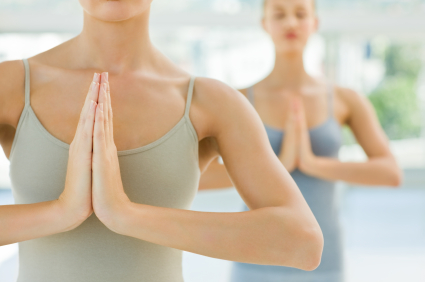How to Best Practice Raja Yoga
ShareWhat is Raja Yoga?
Raja yoga is one of the six orthodox schools of classical yoga. Its name can literally be translated to mean “the individual uniting with the divine”. It aims to give the student an unique experience of oneness with God, achieved through a series of yoga sutra techniques that are intended to lead the student to enlightenment.
Practicing the Raja Yoga Technique 
The practice of raja yoga involves eight different techniques (levels) that may be practiced by anyone. These include:
1. Conduct/ Self Restraint– “Yama”
Yama is a code of behavior that when practiced bestows both internal and external peace to the Yoga raja student. They are freed from bad karma by practicing precepts of self-restraint, including:
- Non-killing – “Ahimsa”
- Non-stealing – “Asteya”
- Non-covetousness/ non-greed – “Parigraha”
- Sexual Continence/ abstinence – Brahmacharya”
- Truthfulness/ Honesty – “Satya”
2. Devotion/ Observance – Niyama
This observance builds on the practices of self-restraint by implementing them into daily activity. Examples of this may include:
- A physical discipline, such as Hatha yoga.
- Self-development studies though written studies.
- The honoring of a Guru.
- Contentment with life.
- Surrendering the ego to a higher power.
3. Physical Practice – Asana
The most popular physical practice of Raja Yoga are the postures and exercises practiced in atypical yoga studio. These Asanas build the nervous system and muscular strength, and prepare a student for the seated meditation central to the practice.
4. Breath Regulation – Pranayama
The breathing exercise of Raja yoga are said to connect the students life energy (“Prana”) and breathe. An example of one of these breath techniques is alternating forced exhalations between alternating nostrils.
5. Sense Withdrawal – Prathyahara
Sense withdrawal involves detaching all five senses from any stimuli detected in the immediate environment. This is the last of the foundation levels required in order to pursue the true spiritual experience of meditation.
6. Concentration – Dharana
Only once the sense have been withdrawn can concentration truly begin. In meditation, by focusing all of the senses on a singular concentration point, the mind is more easily able to reflect inwardly. Raja yoga encourages concentration on a singular point for twelve seconds or more without interruption.
7. Meditation – Dhyana
Meditation may be defined as an unbroken flow of concentration on a singular point by the mind. The practice becomes easier with time, and may be measured by counting the breath, with or without a mantra.
8. Superconsciousness – Samadhi
The attainment of superconsciousness is not something that can be described in words nor understood intellectually. As described by Hindi Philosophy, the student’s true understanding of the practice can only be realized through direct, subjective experience.
The last level of Raja Yoga practice is where the student finally reaches the peak in their spiritual evolution. Printer Friendly Version
Printer Friendly Version
 References
References
Related Modalities
 Yoga - All
Yoga - All
